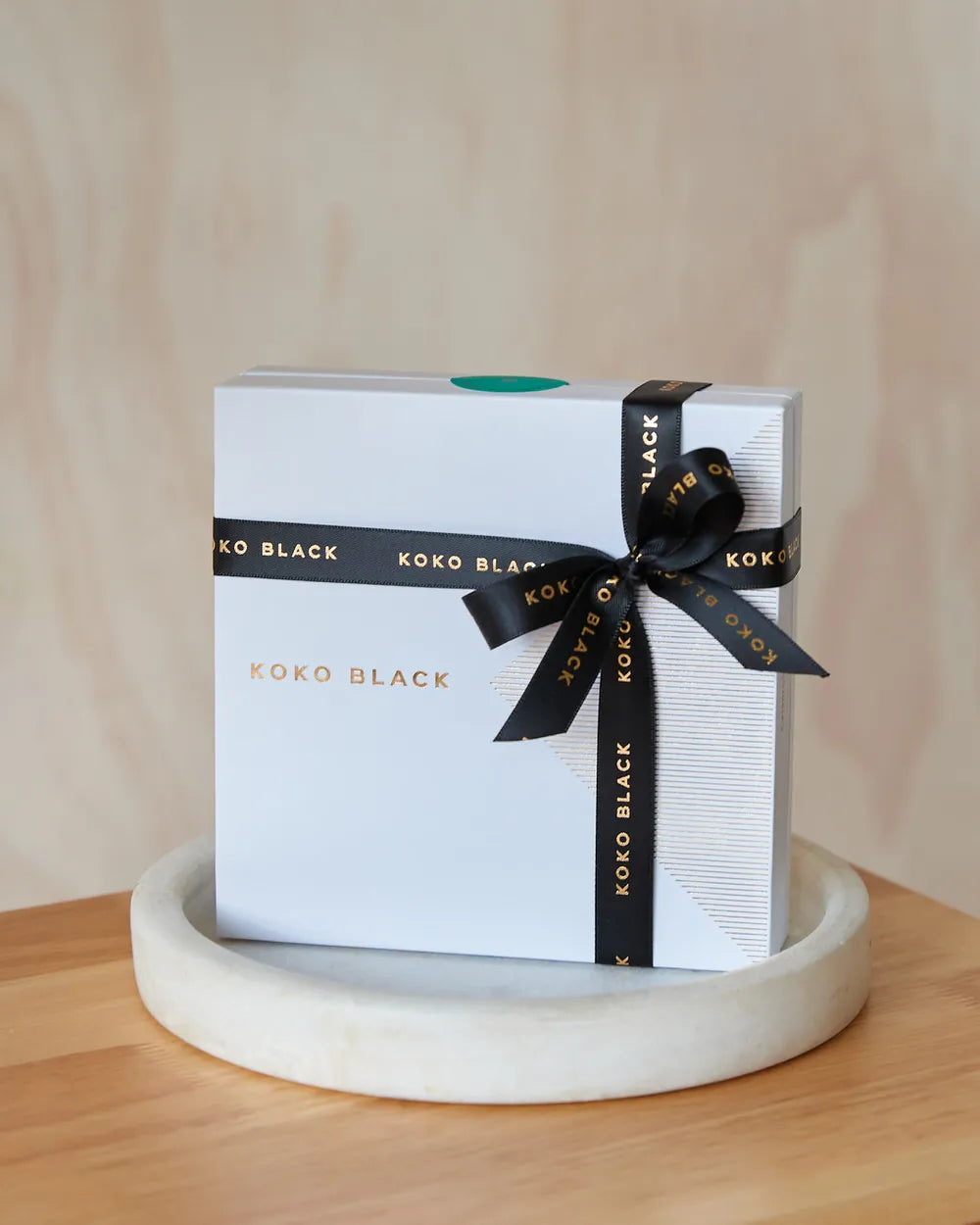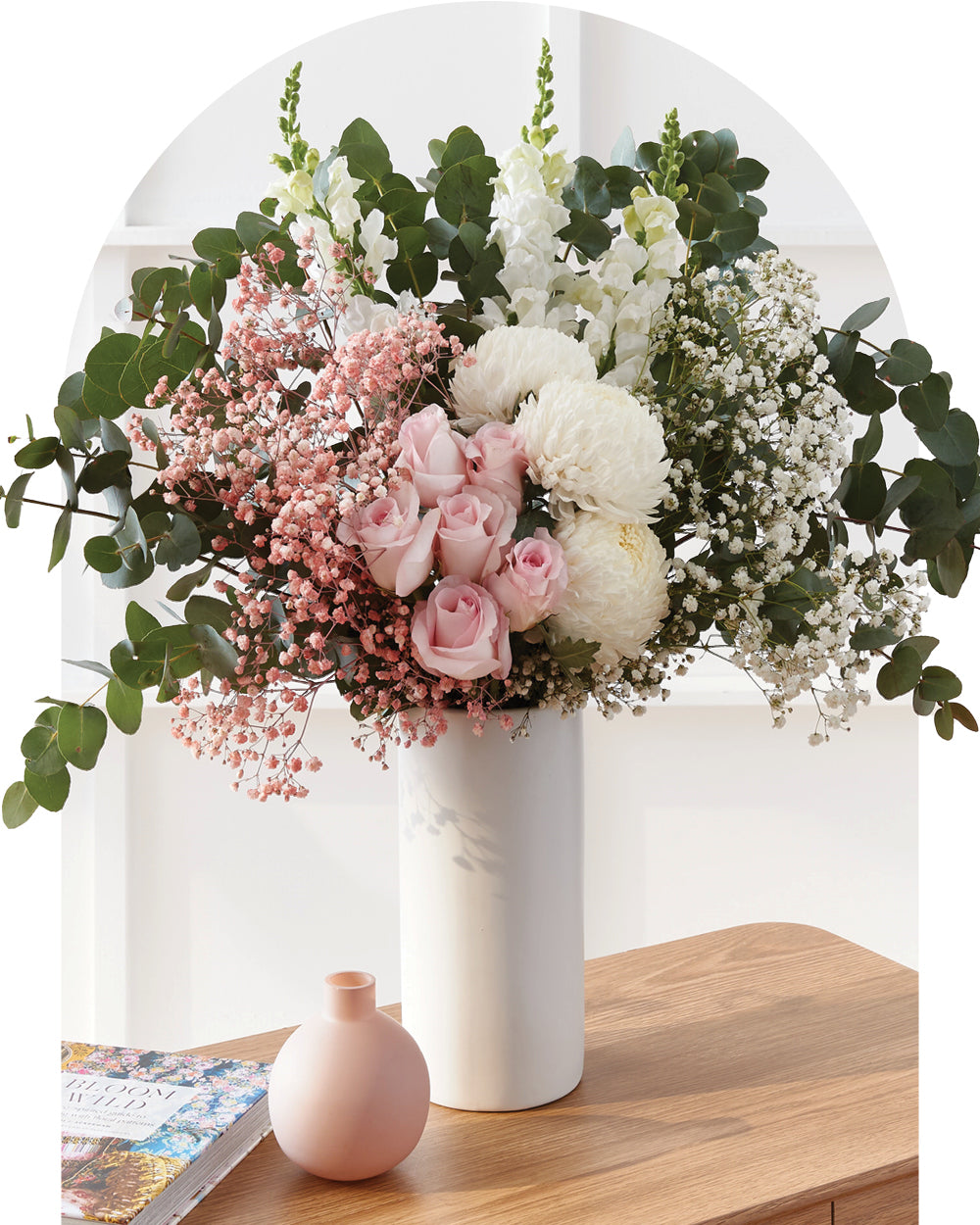Monstera plants have long been a household favourite. The most common is the Monstera Deliciosa, which you might also know as a Swiss Cheese Plant, Mexican Breadfruit, or even a Fruit Salad plant. Alongside its other lesser-known siblings, this family of tropical plants are well-loved in homes all over the world. But how do you care for monstera plants?
They might add drama to your room, but not to your life. Easy going and hardy, these stylish plants make for a great gift, even for a beginner plant parent. We’ve rounded up our top tips for monstera plant care, and answered your most frequently asked questions.

How to care for monstera plants
1. How much light does a monstera need?
Monsteras grow naturally in rainforest environments, so it’s no surprise that they thrive in bright to medium indirect sunlight for between 6-12 hours a day. Make sure to replicate this environment as much as possible in your home.
They’ll feel most at home next to an east or south-facing window, but be mindful that too much sun may scorch the leaves. You’ll also want to avoid putting them on a windowsill, as they enjoy growing in more spacious environments.
We recommend rotating your monstera frequently to encourage even growth on all sides of the plant – otherwise, you’ll end up with a lopsided monstera!

2. How often should you water a monstera?
Contrary to what many plant parents think, you can’t water all of your plants at the same time. It’s very easy to over or underwater this way.
Each monstera’s watering schedule will be slightly different depending on many factors, including the temperature and humidity of its environment and the size of the plant. But a general rule of thumb is that they like to be watered every 1-2 weeks. This may be more frequent in hotter weather, and less over the winter months.
A better way of judging whether a monstera needs water is by checking the soil. Once the top 2 to 4 inches of soil are dry, they’re ready for another drink. This might seem too long, but you want to let the soil dry out between waterings. Any drier and you’ll risk underwatering it. It’s not supposed to live in desert-like conditions! If this method scares you, consider buying a moisture meter for a more scientific approach.
When you do come to water, make sure you do so thoroughly. Your plant should be potted in a container that has drainage holes. If you’ve already picked out a beautiful decorative pot, buy a nursery pot with holes that you can slot into it, and pot the plant that way. When watering, keep the water flow going until you see it drain out of the bottom of the pot. But don’t let the plant sit in water; make sure to empty any excess water from the decorative pot or saucer beneath it once your plant has had a chance to soak up what it needs.
While they’re a hardy plant that can survive a bit of neglect on the watering front, you won’t keep them very happy if you don’t give them the moisture they need!
3. How much humidity does a monstera need?
As a native of Central American tropical climates, they also prefer more humid conditions. They will live quite happily in a normal home environment, but to keep them extra healthy, you could always up the moisture in the air.
Moving it to a room with lots of moisture such as a bathroom or kitchen can be a good solution for this. But if that’s not possible, a cheap, quick and easy way to up the humidity is by lightly dusting the leaves with a misting bottle once a day.
If you’re able to splash some cash, almost all houseplants will benefit from a humidifier – so it’s worth the investment. Use it throughout the winter months to keep your houseplant health optimal. They produce steam consistently to add extra humidity to the air – great for those of us that love more tropical climates too!
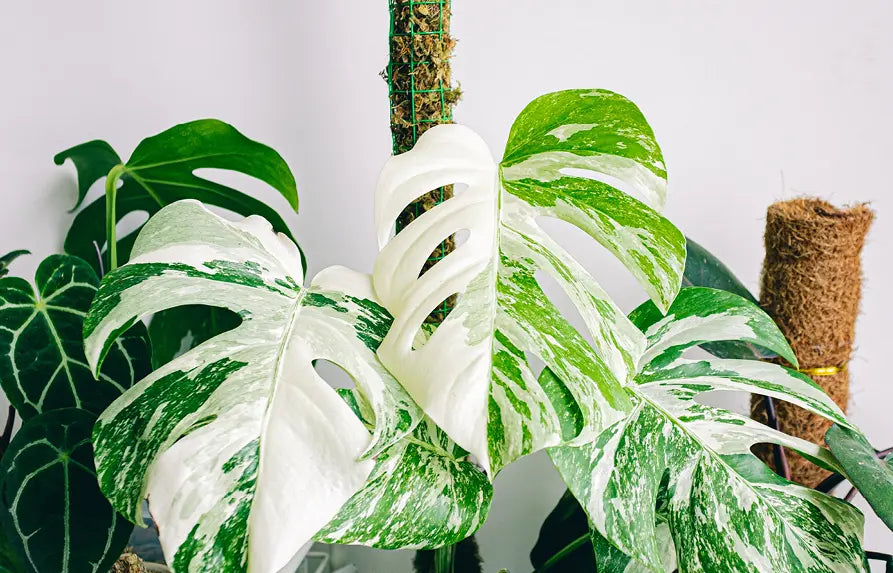
4. Should I give my monstera plant food?
As well as hydration, your monstera will enjoy a meal every now and then. You should feed it organic houseplant food or fertiliser around once a month.
For a low maintenance option in terms of monstera plant care, you could also get an organic potting mix when you first plant it, so that your monstera receives a slow release of fertiliser from its soil. This means that you shouldn’t need to feed it within the first 6 months of looking after it. It’s a win-win!
5. What soil does my monstera need?
Monsteras will do well in good quality soil with peat moss that is both rich and nutrient-dense but also allows drainage. If you want to get technical, optimal monstera soil has a slightly acidic pH, between 5.5-6.5. A mix of peat moss, perlite and pine bark fines makes for a great soil cocktail for a monstera.
When it comes to potting your plant, you may be surprised to know that compared to the size of the plant, they actually don’t need a whole lot of soil mass. So don’t drown your monstera in soil!
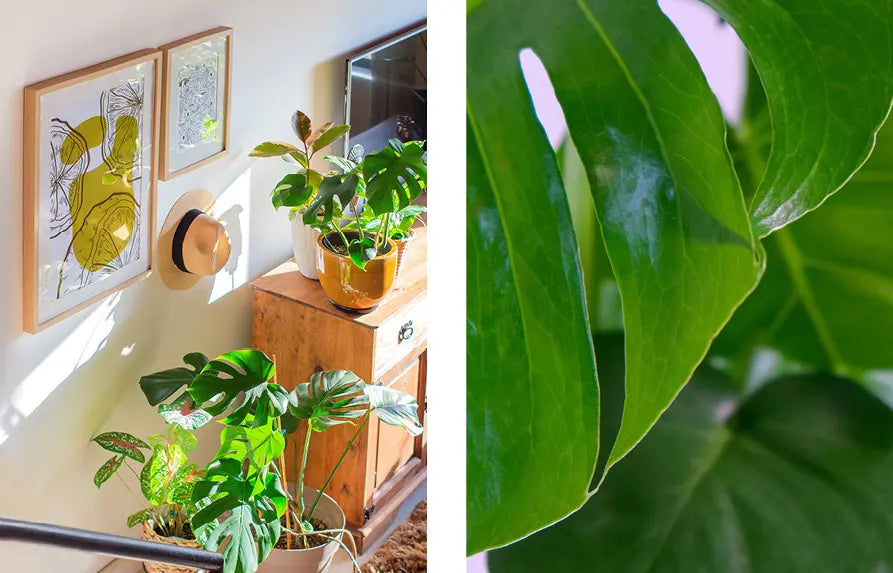
6. Is a monstera an indoor or outdoor plant?
It’s no secret that monsteras are one of the most popular indoor houseplants. Given the heat of their natural environment, the monstera is typically seen as an indoor plant in many places around the world. They live well at a temperature of between 18 – 29 degrees celsius. If you’re lucky enough to live in an area that sees warm weather consistently throughout the year, your monstera may be suited to living outside. However, if the temperature drops below 10 degrees celsius at any point, it’s best to bring them indoors.
If you do choose to plant it outside make sure to pick a shady, dark spot of your garden, as this is where they’ll thrive.
Fun fact, if monsteras are kept outside they actually produce flowers and edible fruit. This is where the Monstera Deliciosas get their nicknames Mexican Breadfruit and Fruit Salad plant from. The rest of the plant is not edible though and can be irritating to cats and dogs, as well as humans if it’s consumed. So make sure to keep them out of the way of pets and small children.
7. How do I make my monstera grow faster?
When it comes to maximising the size of your plant and its leaves, make sure to provide it with the prime conditions mentioned above. They can grow like wildfire! They would typically climb on other plants in their wild environments, so you can also train your monstera to grow up a trellis, moss pole or board to encourage height. You might be surprised to know that they can actually grow as high as 10 feet tall.
If the size is getting too much, feel free to cut it back – they’re happily pruned! You could also make the most of your beautiful plant by propagating it and gifting a new lovely monstera to a friend. After all, there’s nothing like receiving a new, beautiful plant for your home.
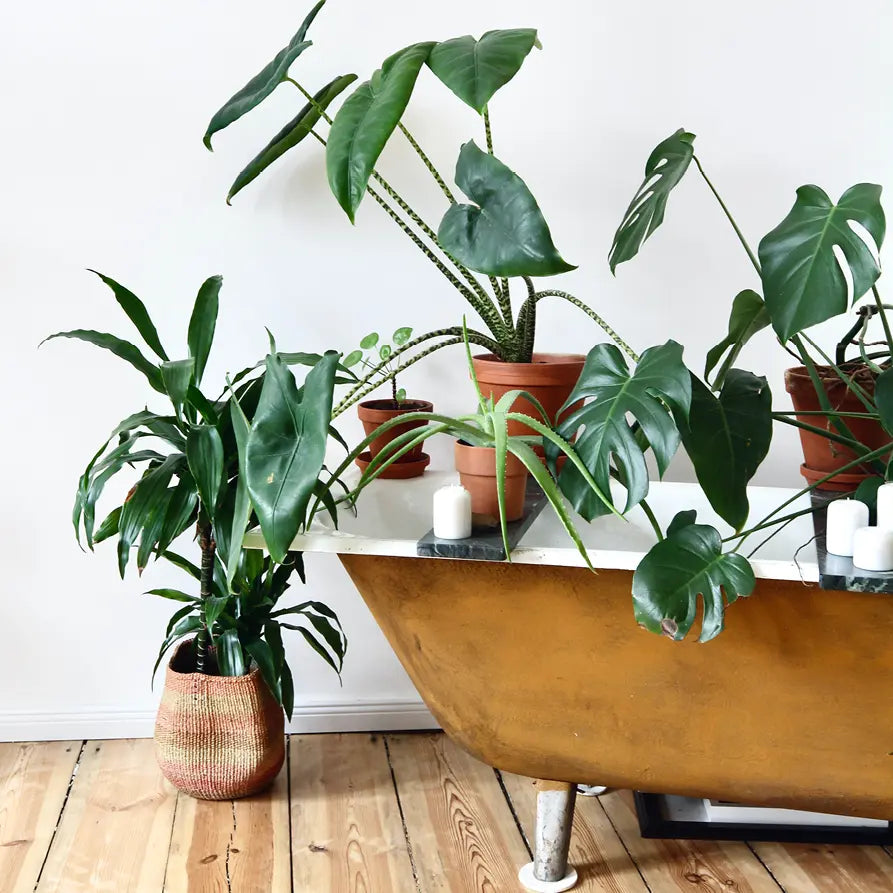
8. How often should you repot your monstera?
There are telltale signs that your monstera needs a bigger pot, so you should know when the time is right. If it hasn’t seen any new growth, or the roots are growing out of the drainage holes or over the top of the post, it likely wants a new home. You can also tell when watering – if the soil won’t hold any water, this means that it has become rootbound.
Generally, you should be looking at repotting your monstera every 18-24 months, choosing a pot that is between 2 and 4 inches larger in diameter. Any larger than this and you risk drowning the roots. It’s also best to repot in the warmer months, as this is when your plant will be at its strongest.
You should now be full of monstera plant care tips, and ready to give your plant the healthiest possible life. If you’re in need of more plant and flower tips, head over to our blog, or if you’re ready to get your hands on a new monstera or gift one to a friend, shop now.







